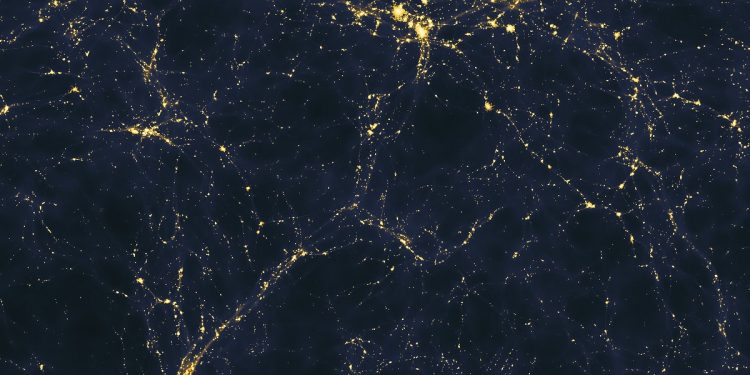The universe is overwhelmingly dark, with very little light. Thanks to NASA’s New Horizons spacecraft, scientists have now made the most precise measurement of the light produced across the entire cosmos—a crucial step in confirming what makes up the universe. But to get this answer, the spacecraft had to venture far from the Sun’s interference.
The question of how dark the universe really is has puzzled astronomers for decades. From our position in the solar system, sunlight, interplanetary dust, and scattered ice make it difficult to measure the faint ambient light produced by the universe’s countless billions of galaxies.
Now, more than 18 years after its launch and nine years after mapping Pluto’s surface, the New Horizons spacecraft has drifted more than 5.4 billion miles (8.8 billion kilometers) from Earth—far enough into deep space to measure the universe’s background light without interference. The team’s findings, published in The Astrophysical Journal, have provided an answer: the universe is, indeed, mostly darkness.
Measuring the Cosmic Optical Background
This ambient light, known as the Cosmic Optical Background (COB), is essentially the sum of all visible light produced over the universe’s entire lifespan. By comparing this COB to the light we expect to see from stars, galaxies, and even the outer regions of black holes, astronomers can test whether our current models of the universe are accurate. If everything aligns, it means we mostly understand how the universe works; if not, something significant might be missing.
But accurately measuring this light from Earth or even within the inner solar system is nearly impossible due to all the scattered sunlight and interplanetary dust. As Tod Lauer, an astronomer and New Horizons co-investigator, explains: “In our part of the solar system, there’s just too much sunlight and dust scattering light into a hazy fog, making it hard to see the faint glow of distant galaxies.”
To overcome this, New Horizons traveled far out to the Kuiper Belt, where the spacecraft used its body to block the Sun’s light. It then turned away from the Milky Way’s core and captured two dozen images of the faint universe, away from our solar system’s noise.
The Universe: Light Confirmed, Darkness Dominates
After calibrating the data and comparing it to infrared observations from the Planck satellite, the team arrived at their conclusion: the universe’s visible light amounts to about 11.16 nanowatts per steradian. This figure matches what we expect from the light generated by galaxies over the last 12.6 billion years.
“The simplest interpretation is that the COB is completely due to galaxies,” says Lauer. In other words, there’s no hidden light source we’ve been missing. Beyond the galaxies, the universe is mostly darkness—and nothing more.










